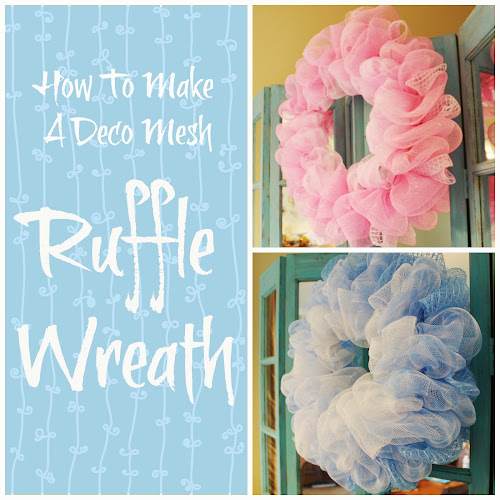Although I can't afford the real thing, I am drawn to the charm
of vintage Halloween folk art pieces. Over the past couple of
years I have collected a few reproduction vintage
Halloween items and even attempted a DIY vintage pumpkin.
This year the little collection found itself in the kitchen.
Most of the items came from Hobby Lobby when their
Halloween items were on sale. The two largest pumpkins
were purchased from a floral wholesaler's tent sale.
The suprized pumpkin was made for about $3 mostly
from items from the Dollar Tree.
The $3 pumpkin got her start almost accidentally.
The large paper mache' pumpkin with the striped
hat was a good buy at $11.25...
...but he had condition issues like broken surface areas,
weird painting around the bottom and the top of his
head doesn't fit onto the bottom very well.
I "googled" around to try to find a way to fix the
broken areas and came across "paper clay".
glue, joint compound and linseed oil. They made much
more quantity than I needed for a patch job. I decided to
just use the first three ingredients (which I already had)
to try to fix the broken areas.
(I could have tried traditional paper strips mache' but it looked like that would have
taken more time to make it blend into the original pumpkin surface.)
At first I mixed the toilet paper (about 10 sheets at a time)
with enough water to throughly wet the paper and
then added a few squirts of school glue in a bowl and
mushed them all together.
I just pinched off pieces of the mush and patted the
"spit balls" into/onto the broken areas. After drying
overnight, the patched areas were very firm and
the texture was similar to the surrounding areas.
It also took acrylic paint well.
That experiment made me wonder if the same mix
would work on hiding the obvious seam that is on
Dollar Tree carvable pumpkins.
Well, yes, it did hide it but then the "fix" was a different
texture than the original surface. However, the toilet
paper mache' gave the middle of the pumpkin a
similar texture to the reproduction vintage Halloween
items from Hobby Lobby. I figured the HL designers
had researched and made their items close to real
vintage items so I would just copy HL.
As I went along, I decided it was easier to just soak a
few pieces of toilet paper in some water, pinch off
pieces of the wet paper, press it onto the pumpkin
put a little glue on top of the "spit ball" and rub it in.
It is very easy to do BUT I found that with either method
the glue makes your fingers so sticky that you have to
apply a "spit ball" then move over to another
area and do the same so you are not accidentally
pulling up non-dried areas with your sticky fingers.
So the little pumpkin actually took about 3 sessions of
applying, then letting the toilet paper, water, glue mix
dry and starting again. Each session was quick.
It is easy to stop and start...just rinse out
the bowl and wash your fingers off between
sessions. Eventually all the little sections of the
dried mix bump up against each other.
I tried to put larger pieces of the soaked toilet paper on
the pumpkin (on the bottom so it wouldn't show)
to make the process faster but the texture was
different and not like the real vintage pieces.
When the surface has been covered with the toilet paper
mache' and has dried, it is ready to paint.
OK, so I said that you could make the vintage pumpkin
for about $3 with items from Dollar Tree:
pumpkin $1
school glue $1
water color set $1
Actually I did not use a water color set to paint the pumpkin
but an inexpensive acrylic paint from the craft store.
Also I used a sharpie pen and not black paint from a
water color set but you COULD use the set and get the
same results...truth in crafting costs.
Oh, I didn't count the cost of the toilet paper...I HOPE
that you have some of that on hand already.
This is the pumpkin after the first coat of paint:
For the second coat I used a slightly different orange to
give it a little variation but you would not have to do that.
If you are using a water color set, you could mix a little
more red or yellow into the orange to make it different.
For the face of the pumpkin, I "googled" and found
a vintage item that looked easy to copy. You might
find a vintage pumpkin face that you like better.
I was afraid that the paint might "run" or "bleed" on the
toilet paper surface so I experimented on the bottom.
The paint did not run or bleed. Maybe the glue seals it.
Here is our girl all finished...
...Tom Kat thinks that she looks like Betty Boop.
To give her a little more aged look, she had a little
brown acrylic paint mixed with satin varnish
brushed on top of the dry paint.
(This same toilet paper mache' technique could be used
on larger faux pumpkins too to make larger vintage-inspired
Halloween decorations. I'm planning on getting a larger faux
pumpkin when they go on sale after Halloween and try a
big one next year. )
Here she is with her new friends:
The large white pumpkin got an orange ruffle to help
him blend in color-wise a little better with the other items.
In looking at vintage Halloween items online, I
noticed that a lot of them have ruffles at the neck.
All of the orange crepe paper was sold out so the
pumpkin got a ruffle made from 3" strips of paper napkins.
It was easier to tape the ruffle to the cake stand
than to try to attach it to him.
I had forgotten that I had bought the medium sized
vintage-looking cat and pumpkin heads last year at a big
discount at the after Halloween sale at Hobby Lobby.
When HL put their Halloween items on sale back in
September of this year, I guess I still liked them and bought
them again (forgetting about the ones sitting in the attic).
As I was getting Halloween items out of starage,
I found the ones purchased last year too.
This year's are exactly like last year's but even cheaper.
If you look closely you can see the repaired and repainted
areas on the large orange pumpkin.
For right now, good enough is good enough.
His head still does not fit together very well.
These guys are just like they are when they came from HL.
The black riser the cat head is sitting on is just some wooden
plaques from the craft store painted black and stacked.
Since I had duplicates of the SAME items I decided
to split the vintage items up between the kitchen table
and the counter...maybe no one will notice the twins.
The frills on their hats could use a little sprucing up but
if these items really were vintage, the hats would probably
look like that anyway.
The black candlesticks are ones that were purchased in
the clearance section of Hobby Lobby and all painted
black to unify them. They were used in a similar vignette
a couple of years ago in "Pick A Peck of Pumpkins".
All of those faux pumpkins on the candlesticks got a new
paint job this year after being bleached by the sun in the
yard for a few Halloweens. They also got new stems.
If you want to see how I made the stems you can click
Another vintage vignette by the refrigerator is tiny.
It got started when I got a set of little reproduction vintage
cards with tiny clothespins on the back from World Market.
I haven't really figured out a good use for them but
for now they are clipped onto votive candle holders.
On this card, the little girl is warming her buns by the fire...
...I hope her buns don't CATCH fire on the candle.
I don't have them lit unless I am in the room.
This little guy came from Dollar Tree.
To me he looks like some of the vintage items that have
the body of a human but the head of a pumpkin.
I enhanced his colors a little bit with acrylic paint.
Thanks for taking a Halloween tour of my kitchen décor!










